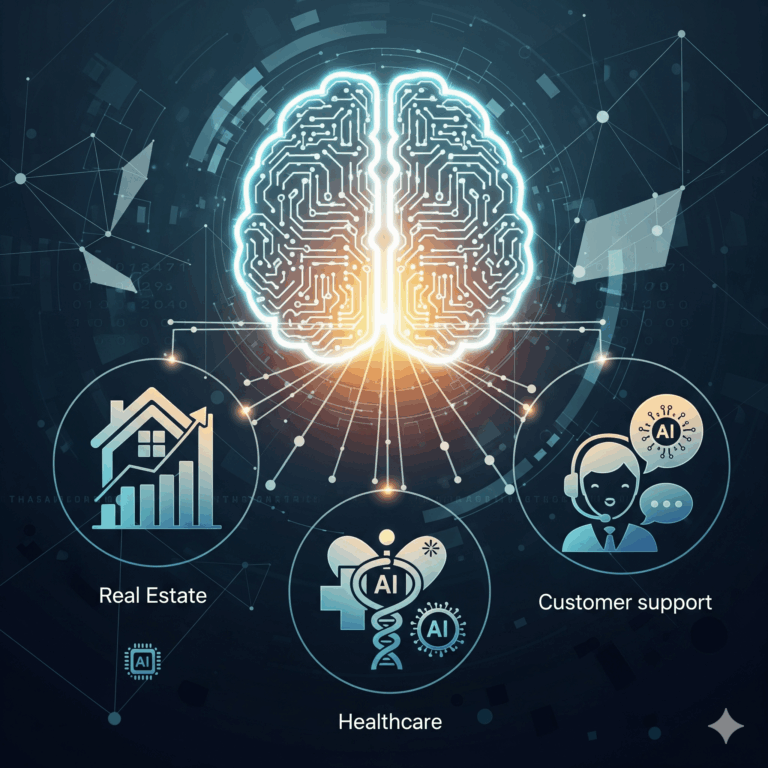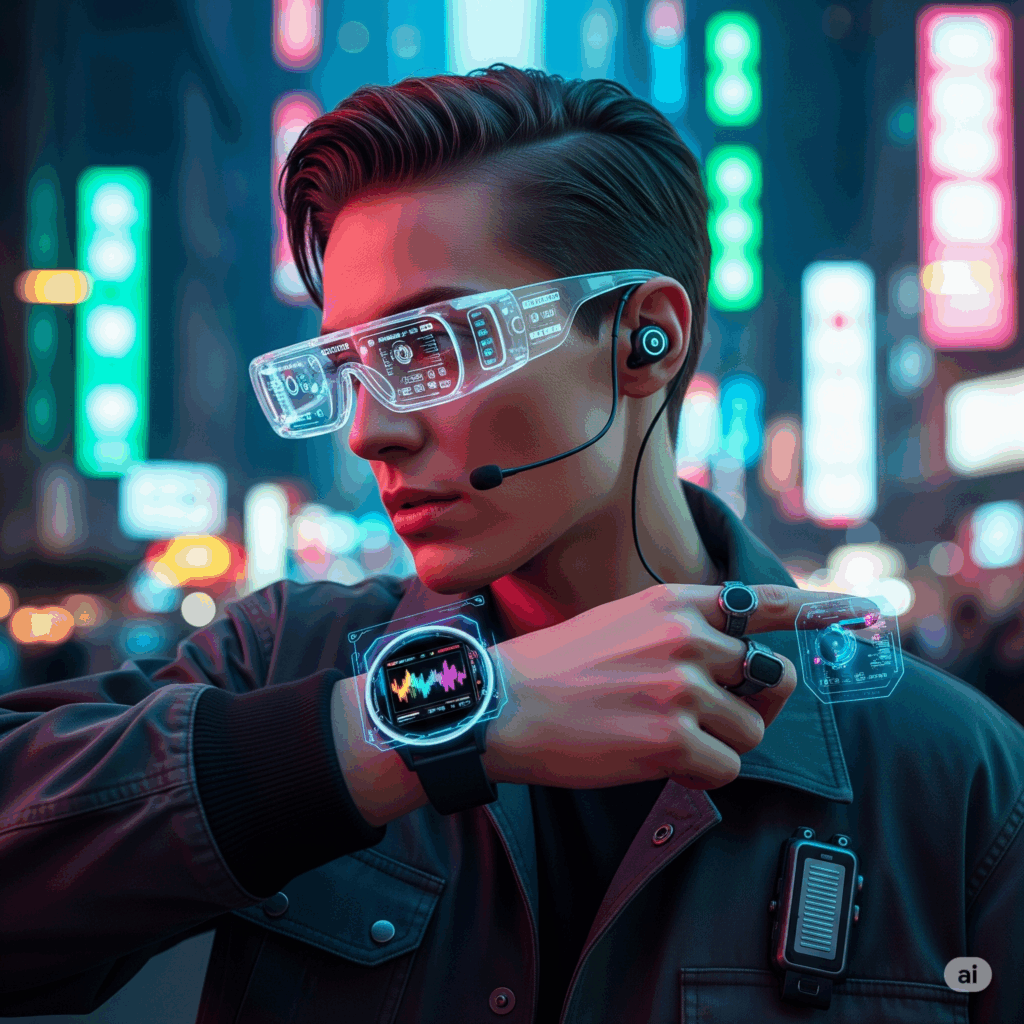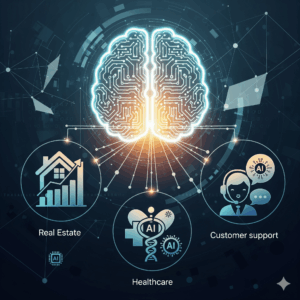
Are you looking for investment, pitch your idea with us!
Wearable technology has transformed from simple step counters to sophisticated devices that monitor your health, habits, and even emotional state. Once considered luxury gadgets, wearables are now becoming essential tools for modern life, empowering people to take control of their wellbeing, productivity, and lifestyle choices.
Consider this: your smartwatch can now track your heart rate, analyze your sleep quality, remind you to hydrate, and even detect early signs of stress or fatigue. With AI and machine learning at the core of these devices, wearable technology is evolving beyond passive tracking—it’s actively predicting and guiding your daily decisions.
The wearable tech revolution is here, and it’s changing not just how we live, but how we understand ourselves.
The Evolution of Wearable Technology
- Early Wearables
- Fitness trackers and pedometers were the first wave, primarily designed to count steps and monitor basic activity.
- These devices laid the foundation for integrating technology into daily routines.
- Smartwatches and Advanced Trackers
- The rise of smartwatches, like the Apple Watch, Fitbit Versa, and Samsung Galaxy Watch, brought notifications, GPS tracking, heart rate monitoring, and even ECG capabilities.
- Users could now integrate fitness data with smartphones and apps, creating an ecosystem of insights.
- Next-Gen Wearables
- Beyond watches, wearable tech now includes smart rings, glasses, and clothing embedded with sensors.
- Advanced wearables measure blood oxygen levels, body temperature, posture, and even emotional stress, opening doors to holistic health monitoring.
- Market Growth & Adoption
- According to Statista, the global wearable technology market is projected to exceed $80 billion by 2027, fueled by innovations in health, AI, and IoT connectivity.
How Wearables Know You
Modern wearables combine sensors, artificial intelligence, and connectivity to learn about you:
- Biometric Sensors: Devices measure heart rate, respiration, skin temperature, blood oxygen, sleep cycles, and more.
- Machine Learning: Algorithms analyze your behavior patterns, predicting stress points, suggesting workouts, or even adjusting notifications based on your daily routine.
- IoT Integration: Wearables can communicate with smartphones, smart home devices, and cloud platforms, creating a connected environment that adapts to your lifestyle.
For example, some smartwatches now alert users to irregular heart rhythms, potentially preventing serious health events before they occur. Meanwhile, smart clothing can monitor posture and alert you when sitting for too long, helping reduce back pain.
Top Wearable Gadgets of 2025
- Smartwatches
- Apple Watch Series 9: ECG, blood oxygen monitoring, sleep tracking, fitness insights.
- Samsung Galaxy Watch 6: Advanced heart health monitoring, AI-driven activity suggestions.
- Smart Rings and Jewelry
- Oura Ring: Sleep tracking, heart rate, temperature monitoring in a discreet form factor.
- Motiv Ring: Tracks steps, calories, and active minutes without the bulk of a watch.
- AR/VR Headsets
- Meta Quest 3: Immersive experiences for work, collaboration, gaming, and fitness.
- Microsoft HoloLens 3: Applications in healthcare, industrial training, and productivity.
- Smart Clothing
- Nadi X Smart Yoga Pants: Vibrates to correct posture during workouts.
- Hexoskin Smart Shirts: Monitors heart rate, breathing, and movement for athletes and health enthusiasts.
- Specialized Wearables
- Wearables for seniors or patients: Fall detection, medication reminders, vital monitoring.
- Mental health wearables: Devices that detect stress, anxiety, and mood shifts.
Benefits of Wearable Technology
- Health & Fitness
- Early detection of health issues like irregular heartbeat, high stress, or poor sleep.
- Personalized fitness recommendations based on your activity, heart rate, and recovery patterns.
- Productivity & Lifestyle
- Smart notifications and reminders reduce distractions and improve efficiency.
- Insights into daily routines help users optimize work, rest, and leisure.
- Enhanced Safety
- GPS tracking, fall detection, and emergency alerts provide peace of mind for seniors, children, and adventure enthusiasts.
- Data-Driven Lifestyle Choices
- Wearables guide nutrition, hydration, sleep, and mental wellbeing, creating a 360-degree health ecosystem.
Privacy and Ethical Considerations
While wearables provide immense benefits, they also raise privacy and ethical concerns:
- Data Security: Personal biometric data is sensitive. Users must ensure devices use encryption and secure cloud storage.
- Ethical AI: Predictive analytics should be transparent and free of bias, especially in health recommendations.
- User Awareness: Individuals need to understand what data is being collected and how it is used.
Being informed about privacy practices ensures that wearable tech remains a beneficial companion rather than a risk factor.
The Future of Wearables
The next decade promises even more intelligent, integrated, and predictive wearables:
- AI-Enhanced Devices: Fully predictive health and lifestyle guidance.
- Integration with AR/VR and Smart Homes: Wearables will act as interfaces for immersive experiences.
- Personal Digital Assistants: Devices will not just track activity—they will anticipate needs, suggest health interventions, and optimize daily routines automatically.
- Medical Integration: Wearables could become standard tools for remote patient monitoring, reducing hospital visits and improving chronic care.
The potential is limitless, making wearables one of the most transformative tech innovations of our time.






















